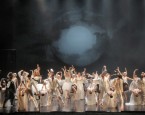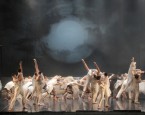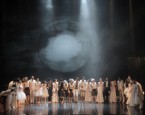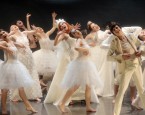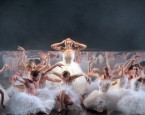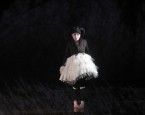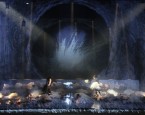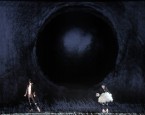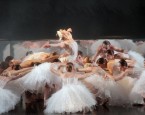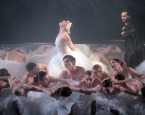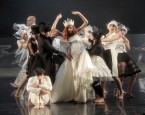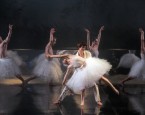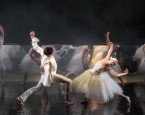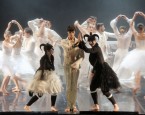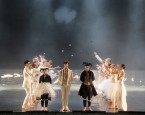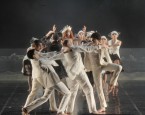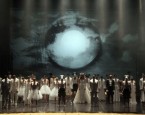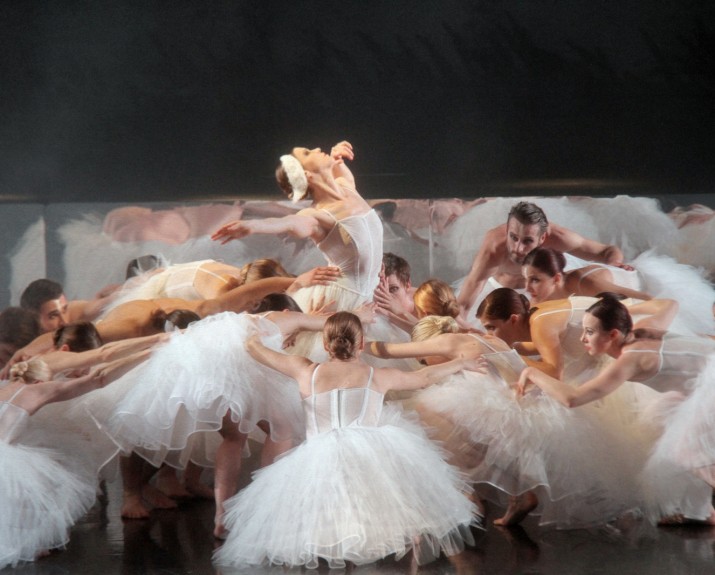
Premiere SWAN LAKEPeter Ilyich Tchaikovsky
“The entire human creative endeavour has forever done the same – trying to explain the man.
Swan Lake is definitely the most famous ballet, a ballet of all ballets, thus mine is a great responsibility to offer a new interpretation while remaining true to this magnificent work.
What first comes to my mind when I think of the Swan Lake are the white and the black swan: the opposite, the reflection or the mirror. Thus, I believe that it is the issue of personal reflection of each protagonist that is central to this work. The opposite or the other side I connect with love, relationship and devotion, with life and with death. Total devotion is a kind of death, namely the death of what is not free and is conditioned in the man or the death that opens the door to unconditional love. What I also find interesting is the fact that within this fairy tale there are the mother and the father, only on opposite sides. The Queen is Prince Siegfried’s mother, while the magician Von Rothbart is Odile’s father, the bewitched daughter for whom Prince Siegfried forgets the oath of eternal love for Princess Odette, who was changed into a swan by Von Rothbart. On the meta level of the story, this is also a kind of mirrored relationship.
For one to be free involves having been subdued first. The very desire to subdue another or oneself implies being divided. This is why this is an important part of the concept of the Mirror – Lake performance.
Over centuries different cultures had the belief that a mirror can captivate the soul.
A mirror enables us to see what with our own eyes we cannot – our face. It gives us the reflection of our identity. The mirror is also other people, our environment and our body, all that is around us and that we come across. As Heidegger says, when the ears, the eyes and the heart open, when we think, ask questions, when we express our gratitude, it is then that we reach the hidden. To be touched, seen, recognised and mirrored is of life importance of the feeling of living.
It is only the others who can give us our real reflection, as human eyes are the only sincere mirror of each man.
Why is it that a human being is captivated in an animal form, in the swan, that magnificent being? In the east, the swan is a symbol of nobleness, elegance and boldness, as well as a sacred, divine bird. In Roman mythology it was also believed to be a sacred bird and was linked to Venus, the goddess of love, while in the ancient Greece it was connected with Apollo, the god of the Sun often pictured with a lyre. The chariots of Aphrodite were adorned with a drawing of the swan, while the supreme god Zeus took the shape of a swan of extraordinary beauty to get close to Leda, wife of the Spartan king, having fallen in love with her. Throughout the world, due to its pure white colour the swan is s symbol of light, purity, innocence and love, while mystical and occult features have been attributed to the black swan.
I would not dare to change the dramaturgy basis of the libretto, as I believe that each spectator should experience the famous story as it is in the original, however, I definitely want to clothe it in the attire of a new interpretation that is characteristic of my signature. Since the very beginnings of the creative endeavour of me as an author, it has been based on a new challenge, thus also development inspired by the ever new orientations.
With the brought together ensemble of around forty performers, twenty-six dancers and sixteen actors, beside the creative ideas of the author’s team, accompanied by the orchestra of the Opera of the Rijeka Croatian National Theatre and on the swan wings of this musical masterpiece of Tchaikovsky, we all together endeavour to create in the hearts of the spectators the theatre experience to be remembered. “
Staša Zurovac

